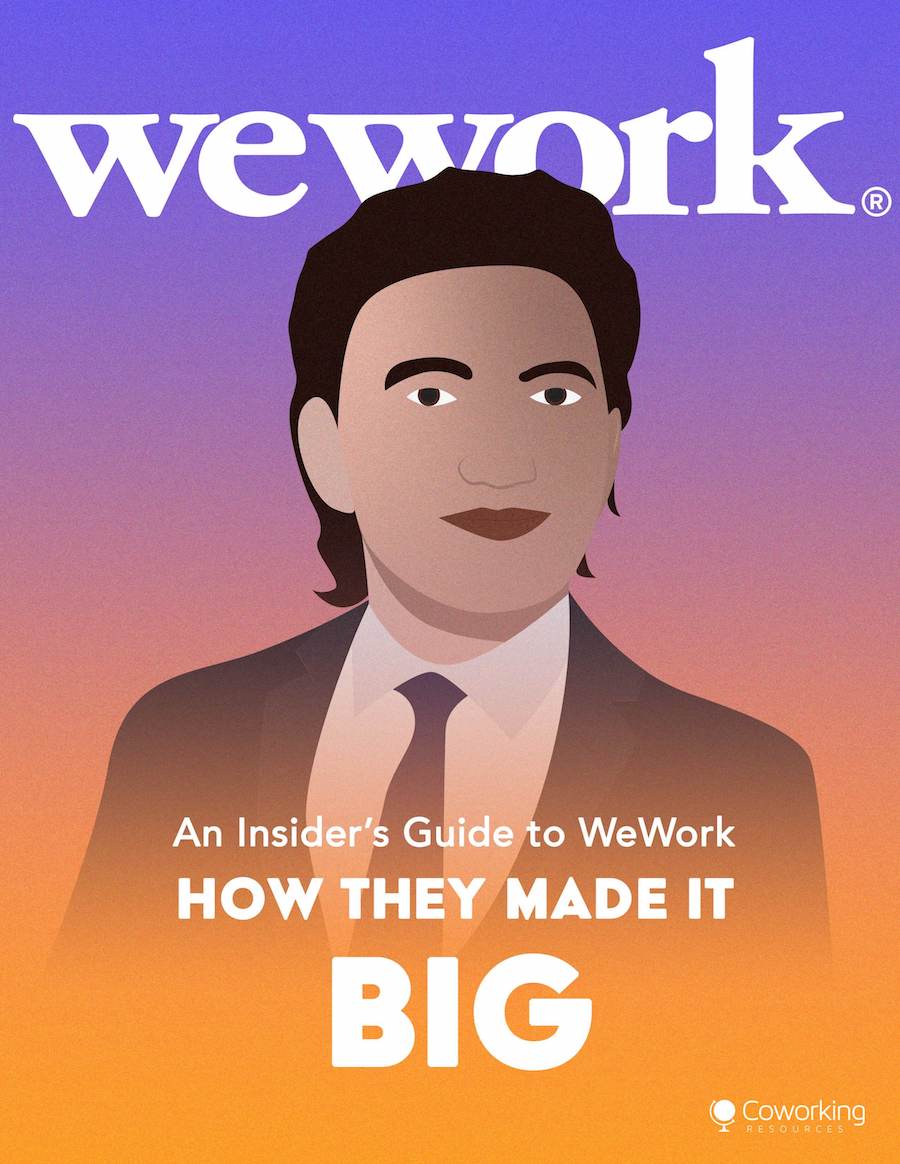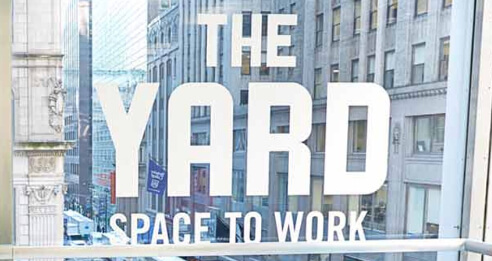
Largest Coworking Companies


Despite very public ups and downs over the last few years, WeWork remains at the forefront of the shared workspace industry. By quickly becoming the driving force behind the industry's growth—and thriving despite a worldwide pandemic—WeWork's success proves definitively that coworking is the new normal. At only a little more than a decade old, the brand is poised to keep growing in the coming years, especially with new CEO Sandeep Mathrani.
Today, WeWork is still shaking up the industry at every turn. Over the past few years, it has acquired tech startups such as office sign-in system Welkio and physical data software company Euclid in a move toward domination in the business sphere. The brand's app, WeWork On Demand, expanded in late 2020 and is now available in 17 major U.S. cities. And despite a disastrous downfall under founder Adam Neumann, WeWork is now on track to be profitable once again by the end of 2021.
If there is anything that the controversial story of WeWork can teach us, is that resilience is key in growing a business, as recently revealed an early strategy of WeWork was to walk into Starbucks and pitch to people working on their laptops.
WeWork's unprecedented success has prompted dozens of questions: Who are the investors behind WeWork? How does WeWork make money? What are the financial risks associated with its business model? Why do landlords decide to take WeWork as a tenant as opposed to leasing directly? The answers might surprise you.

WeWork was founded in New York in 2010 with a goal to offer coworking spaces to entrepreneurs, startup companies, freelancers, and even larger enterprises. The company grew rapidly since its establishment, making it one of the largest and most visible coworking chains in the world. It now has thousands of employees and over 800 locations worldwide, including outposts in 40 of U.S. cities and 32 countries, like Brazil, Germany, and Thailand.

Flexibility is key in WeWork’s business model: They ensure that clients no longer need to worry about long-term leases. The company offers six levels of membership: All Access, On Demand, dedicated desks, small private offices, office suites, and custom full-floor offices.
For single workers, the all-access subscription option provides access to open workspaces across the world, so members can show up whenever they wish, pick any available seat in a common area, and start working immediately. Alternatively, the on-demand option allows you to pay only when you use a space, like a desk or a conference room, on a day-to-day or hourly basis. For those who want a little more stability, WeWork offers dedicated desks that they lease to one client or one business only.
Teams and businesses of all sizes can also opt for private offices, which come equipped with furniture and can accommodate dozens of workers as businesses grow. The most personalized option is a custom build-out, which presents maximum freedom for groups that want to customize their workspace with features like CEO suites, conference rooms, or labs. WeWork scouts buildings and then transforms them, for businesses big and small: They've already done this for Facebook, Microsoft, HSBC, and Deloitte.

WeWork's investors have included a number of global entities, including holding conglomerate SoftBank, private equity firm Hony Capital, and real estate developer Greenland Holdings. In August 2017, SoftBank and its founder, Masayoshi Son, poured a massive $4.4 billion investment into WeWork. This included $3 billion for WeWork itself, namely through primary investment and the purchase of existing shares, and $1.4 billion dedicated to WeWork’s expansion into the Asian market: WeWork China, WeWork Japan, and WeWork Pacific. In August 2018, WeWork announced yet another $1 billion in funds from SoftBank.
As of 2019, WeWork had raised nearly $47 billion in private equity and venture capital funding in the years since its founding. The immense interest by Asian companies such as Hony Capital, Legend Holdings, and China Oceanwide represents WeWork’s promising expansion into Eastern markets. Apart from its Asian investors, Western companies like Goldman Sachs, J.P. Morgan, and T. Rowe Price have also invested in the Manhattan-based WeWork. Unfortunately, when founder Adam Neumann greatly mismanaged the company in late 2019, WeWork lost its chance at an IPO as its valuation dropped more than 90%.
After a very public demise under Neumann's leadership, the company has made an unexpected turnaround. CEO Sandeep Mathrani, who took over in February 2020, is now looking towards a possible IPO for the company once again.

In a nutshell, WeWork rents buildings from property owners at one price and then rents them out to clients at higher prices. Not all of the locations WeWork uses are similarly priced; buying up real estate in Baltimore or Nashville, for example, is cheaper than in New York City. These price discrepancies help keep WeWork's overhead from getting too high.
After renting the buildings, WeWork transforms them, updating everything inside and adding features like cafés, offices, and community spaces. Once finished, the company rents out the spaces for significantly higher prices. Apart from making money on rent, WeWork also provides additional services for a fee, such as partnerships with local businesses, car rentals, and other à la carte amenities.

WeWork pays landlords a huge amount of money and sinks even more into cosmetic updates, so it relies heavily on the revenue from renting to its clients to cover its high costs. If a location does not onboard enough clients to fill the available spaces or if the client's rental income does not cover WeWork's own rent, the company finds itself in a risky position.
As of 2019, WeWork had signed $18 billion worth of leases over the next few years and committed to renting 14 million square feet of office space worldwide. The company had written off massive losses as the cost of massive growth and valued itself at $47 billion at its peak. After a rocky few months in late 2019 and early 2020, today the company is back in the black and sees a promising future ahead. It's important to note that loss periods are not abnormal for startups, especially in the case of WeWork's unusual business model.

A look into the future of Coworking Spaces
The co-working market is about to be disrupted. Let's see how
From the perspective of a landlord, WeWork's business model makes sense despite the high fixed costs and long-term lease agreements. For commercial property owners and managers, it's easier to have one contract with a single large company for a fixed period than to find and lease to several different tenants for shorter periods, especially if the building is in a challenging real estate market. Overall, the managing efforts and negotiation processes are much less troublesome with one tenant, and WeWork usually leases properties for 10 years. This takes less time and resources away from the building owner while taking care of the biggest concern for landlords—vacancy rates. WeWork has also garnered enormous media exposure by attracting young, innovative businesses and curating established corporate clients.
There’s no arguing that WeWork, which was managing millions of square feet of office space as of late 2019, has grown astronomically since its launch in 2010.
Once one of the fastest-growing companies in the world, WeWork was on top of the coworking food chain. In late 2019, a series of shocking events surrounding Neumann's leadership decisions put the future of the company and its massive workforce in question, along with the general perception of the coworking industry and its implications on the commercial real estate market.
Below, we take a look at how and why this coworking giant went from being one of the most highly valued startups to contemplating bankruptcy in the space of 6 weeks, before Mathrani swooped in and helped bring the company back to stability in 2020.
Valued at $47 billion (Softbank being the largest investor), the company rebranded from WeWork to “The We Company” early in 2019. According to reports, the decision was made to help the firm grow and reach a wider audience.
Many business journals and analysts questioned the brand's ability to turn a profit after it lost more than $2 billion in 2018. For years, industry experts in the commercial real estate and tech industry questioned the vacancy rates of WeWork locations and the overall viability of the business model amid its rapid expansion into co-living, education, childcare, and several other sectors.
In August 2019, The We Company submitted its S-1 filing in preparation for an IPO (initial public offering). Almost immediately, headlines and reactions from tech bloggers and economics experts alike criticized the prospectus and the company for its complex corporate structure, questionable business practices, negative financial projections, and inflated language.
After the filing, the company faced more scrutiny of its leadership and finances from both investors and potential shareholders. Conflicts of interest were revealed in CEO and co-founder Adam Neumann’s ownership of the “We” trademark and several stakes of the company’s real estate holdings, raising red flags among stakeholders, employees, and observers alike.
By the second week after the IPO filing, these revelations and criticisms of the company had severely damaged the outlook of the IPO, putting the company in a very fragile position along with Softbank’s $10 billion investment. Amid reports of self-dealing, sexism, and unprofessional behavior, Neumann eventually had to step down from his role as CEO and chair of The We Company in September 2019, just a few days after the company decided to delay its IPO.
As a result, WeWork’s value plummeted from $47 billion to just over $8 billion.
Neumann’s reported behavior and business practices were at the heart of much of the criticisms the company received in the press. The fact that he personally trademarked the word 'We' and licensed the use of the word to his own company for $5.9 million raised red flags among executives and business experts, prompting a rollback of this arrangement soon after it came to light.
Neumann was also reported to have frequently encouraged employees to drink shots of tequila and smoke marijuana at work. This carefree attitude from the CEO, coupled with reports of an increasing lack of gender diversity among the company’s managerial staff and high-level executives, severely damaged the public perception of the company culture. Even before the planned IPO, WeWork was heavily criticized for its lack of female board members or decision-makers in general.
WeWork’s valuation plummeted more and more with every negative report about WeWork’s corporate governance practices and Neumann’s behavior, further disconcerting investors and delaying the official IPO. The turning point occurred after marijuana was found on Neumann’s company jet after it landed in Japan (where it is illegal). Shortly after this incident Neumann stepped down as CEO and drastically reduced his voting power on the board from 10:1 to 3:1. As co-founder of the company, he now only retains a non-executive chair on the board of directors, but no controlling stake in the company.
Though many company decision-makers sought to quell investor’s fears and save the IPO by removing Neumann, his exit package drew even more criticism. By leaving WeWork, the 40-year-old entrepreneur walked away with more than $1.7 billion by selling his shares to SoftBank, earning a sizeable consulting fee in the process.
SoftBank, WeWork’s biggest investor, took control of the company, with former Amazon exec Sebastian Gunningham and CFO Artie Minson filling the CEO position temporarily. Its top investors and executives re-evaluated WeWork’s path to profitability and implemented more conservative strategies to attain positive revenue in conjunction with the company’s drastically reduced valuation. These strategies include cost-saving measures like laying off of over 2,000 employees worldwide, the sale of several companies that WeWork previously acquired, and an immediate halting of the aggressive expansion of the company into new markets. Upon stepping into the CEO role in February 2020, Mathrani has continued building the company back up by cutting costs and righting the company culture.
This scaling back of one of the world’s fastest-growing companies and its IPO troubles bear many similarities to large tech businesses facing the ultimate test of going public. Many coworking space operators are worried about how WeWork’s failed IPO will affect the public’s outlook on the industry.
Though recent events may be disheartening to potential investors in coworking spaces, studies show that WeWork barely scratched 2% market share in the flexible office space sector, with many of its clients being large corporations like Google, Microsoft, and Salesforce. As a whole, the coworking industry has grown steadily year-over-year and demand for local, independent flexible workspaces with strong communities remains stable, and demand is expected to rise again after the COVID-19 pandemic.
If anything, the controversies surrounding WeWork serve as an example to other expanding coworking brands, highlighting the necessity of creating a sustainable company culture and a clear path to profitability in order to earn the trust of members and stakeholders alike.
Save your community manager 41 hours each week—learn how The Yard did it with cloud-based access control.
Read the Case StudyThe Guide to Make Your Space More Profitable
Including interviews with experts and consultants.
Free access to our best guides, industry insights and more.
